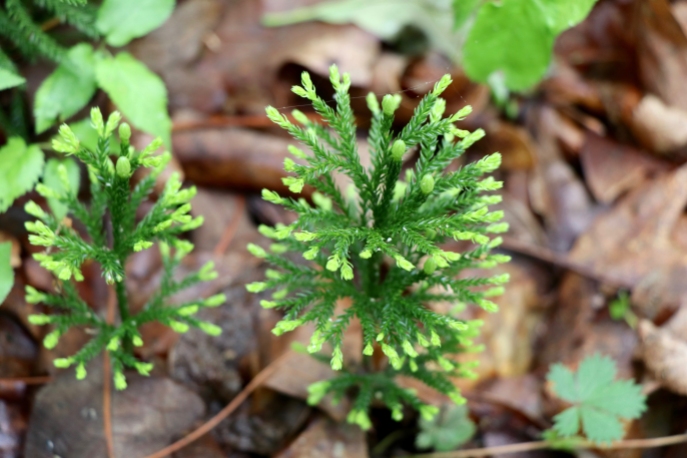Lycopodium obscurum or Dendrolycopodium obscurum
This is the last of three New Year’s posts about local varieties of clubmoss.
Prince’s Pine (sometimes called Ground Pine, Princess’s Pine, or Flat-branched tree clubmoss) is an evergreen beauty. Thanks to branching, it is a tad bushier than Ground Cedar, so each individual plant ends up looking like a tiny hemlock or pine tree. The “leaves” of the plant are best described as scalelike.

Like the other clubmosses, the reproductive structure of Prince’s Pine is the club-like strobilus. The strobili are borne at the tip of the shoots and branches (see photo) of the plant. Each one will produce a cloud of spores in the fall.
Last November I came across several stands of Prince’s Pine near Pandapas Pond. While trying to take some photos, I noticed that the spores were easily released when I brushed my hand across the fruiting bodies. In the photos below, you can see the dust that was released when I did this. It was an impressive show!
Clubmoss spores were once collected and used as “flash powder” to produce bright light for photographers and magicians. Apparently, a little pinch of “Lycopodium powder” will produce quite a bit of light if ignited.
Clubmoss populations have been threatened by over-harvesting for Christmas decorations. This practice is not as common today as it once was, but it still goes on. A stand of Prince’s Pine can take years to reach maturity, so it cannot tolerate repeated harvesting.
Learn more about clubmosses in Virginia here.












Thanks, Gloria. Excellent photos, esp the spore clouds.